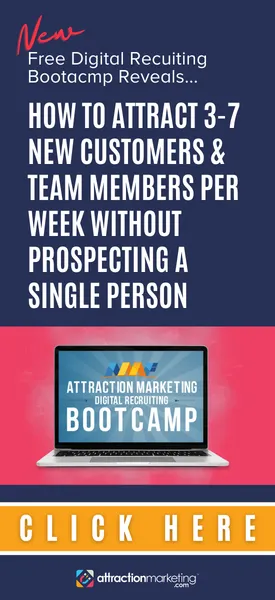I’m Scott, a digital entrepreneur who has been driven by a passion for online entrepreneurship since my teenage years.
During my third year at university I took a year in the industry where I discovered affiliate marketing and SEO.
After graduating, I immediately started building websites, using what I learned to start my 3D printing blog 3DSourced – which now makes five figures in profit every month.
In addition to 3DSourced, I plan to start a social enterprise project in London, focusing on helping the homeless and food insecure – but that could still be a few years away!


When I started my first site, it was initially more about pursuing a passion than a calculated business decision.
At that point I was thinking about monetizing the site through ads for some extra beer money, without realizing that I had stumbled across a great niche in affiliate marketing for high prices.
Once the blog started to gain some popularity, it became clear that there was a huge demand – and relatively little space.
What did you do to become an expert in this field?
Over the past few years, the way Google ranks content from really established sites has significantly shaped my approach.
It’s so important to be able to demonstrate real expertise, especially in an area as specialized as 3D printing.
In the beginning, I was more of a hobbyist than a “real” expert, so I adopted a strategy of using stats-as-support (SAS) to strengthen the credibility of my content.
Several of these stat posts were picked up by other 3D printing/manufacturing sites, which gave 3DSourced some credibility when we started.
As the team grows, it is so important to have a team of expert and passionate writers to generate in-depth content.
I generally use Reddit to find people who are genuinely interested in 3D printing, and let that passion shine through.
It’s much easier to teach someone to write than it is to teach them to love your niche!
How 3DSourced.com makes money?
3DSourced.com leverages organic traffic from Google and Bing by producing high-quality, engaging content that ranks highly in search engines.
We generate income from this traffic through affiliate marketing. When a viewer purchases a 3D printer we recommend, we receive commissions from companies like Anycubic and Elegoo. This model is so effective because it ties directly into the purpose of our content: to inform and guide consumers in their purchasing decisions.
The reason we have such big margins is because I wrote hundreds of articles before we made any money. Once an article is published, it is relatively passive in terms of monetization (except when a new printer comes out and a piece needs updating).
As such, you get the nice compounding effect of getting paid for everything you wrote last week, last month, last year, and so on.
During the holidays, we take advantage of curating content about top deals from our affiliate partners.
Given the nature of our niche, 3D printers and related products are popular as holiday gifts, which works to our advantage.
We do our utmost to reach our newsletter subscribers multiple times with this curated list of deals, ensuring maximum visibility and engagement.
How do you create content that people love?
Writing 2,000+ words of content every day and formatting it yourself for years to come is invaluable. You start to notice the details in the content.
It’s not enough to just bombard people with information. You have to really understand what’s important to different segments of the audience, and help them filter through the noise to find what’s right for them.
We always start with the question: what is someone thinking or looking for when they type a specific keyword into a search engine?
Our goal is to understand exactly this intent and figure out how we can really help our readers.
This approach involves an in-depth analysis of the target keywords and the potential questions and concerns of the audience.
This strategy is about more than just ranking well in search engines. You get that benefit by putting the reader first, increasing average time spent on page, and lowering your bounce rate (I have a feeling Google takes these things into account in their rankings).
Where do you see your company in the next five years?
Looking ahead, the vision for 3DSourced.com is to evolve from a blog to a brand. We need to move beyond our current dependence on Google for traffic.
This year we are diversifying into Pinterest, email newsletters, Facebook and YouTube to mitigate the risks of Google updates as search engines increasingly use generative AI (which affects our visibility).
We hope these investments will break even and continue to grow by the end of the first year, but for now they will require investment in new team members to get them off the ground.
Fortunately, their work is aided by the implementation of – you guessed it – AI tools.
Facebook captions, YouTube scripts, email summaries – with the right direction, these can all be produced from our blog posts with the click of a button (making the whole thing seem less intimidating).
Ultimately, I plan to raise £2 million from the business to fund my social project, with the aim of providing one million meals to those in need. But that’s for the long term!
What are the main obstacles to running a niche website?
Scaling 3DSourced.com while maintaining quality was a challenge.
It’s one thing to know what works; it is another to systematize your instincts so that others can follow them effectively.
That’s why I focused on dialing in my SOPs, producing templates and how-to videos to coach my team members in a more scalable way.
I want everyone to understand not only what needs to be done, but how we need to do it to meet the high standards we set.
I’ve come to realize that when a team member is underperforming, it’s usually because something is unclear or unmeasured in the systems I’ve told them to follow!
3D printing is constantly changing, so we need to keep our manuals up to date to remain accurate/useful.
Every 3 to 6 months we revisit each article to assess whether it needs updating. This could include adding details about new products, or correcting outdated information about what is possible in 3D printing.
I find that updating existing content provides a significantly better ROI than endlessly creating new articles – especially for a site that has been in the game for a while.
What advice do you have for entrepreneurs just starting out?
It is important to understand that success does not come overnight. It took my site about eight months to reach a job-replacement income level of about $4,000 per month. This timeline may vary, but the key is to be patient and persistent.
There will be setbacks. For example, I experienced a significant drop in revenue when Amazon cut its commission rates in April 2020 and had to rebuild them.
If possible, start your website business under circumstances where you experience minimal financial pressure. In my case, living with my parents gave me the space to create without rushing the initial stages of my site.
And be prepared to spend countless hours working on your site alone. This could mean writing content, researching your niche, or learning more about SEO.
In the beginning there was no defining ‘click’ where everything fell into place. Rather, it was my stubbornness and dedication to the process that kept me going.
I continued to produce content – about 100 posts – even though I was barely getting any traffic.
Ultimately, the results came from an unwavering belief in the potential of 3D printing as a niche – and I’m glad it paid off!
That said, embrace the role of a “friendly, comfortable expert.”
This is a principle I always emphasize with my writers. It’s about finding a balance between connecting with your audience on a personal level and exuding confidence in your knowledge and opinions.
This doesn’t mean that you are arrogant or dismissive, just that you are confident in your expertise. And that comes from expertise/immersion.
Your audience will notice this and will be much more interested in what you have to say.










Leave a Reply